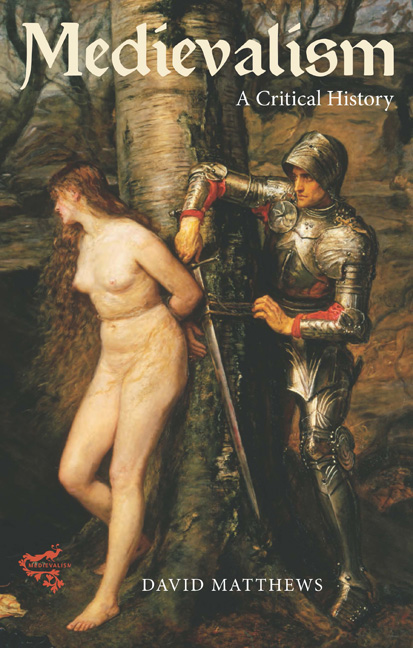Book contents
- Frontmatter
- Dedication
- Contents
- List of Illustrations
- Preface
- Acknowledgements
- Abbreviations
- Introduction
- I TAXONOMIES
- II TIME, SPACE, SELF, SOCIETY
- 2 “Welcome to the Current Middle Ages”: Asynchronous Medievalism
- 3 This Way to the Middle Ages: The Spaces of Medievalism
- 4 On Being Medieval: Medievalist Selves and Societies
- III HISTORY AND DISCIPLINE
- Conclusion Against a Synthesis: Medievalism, Cultural Studies, and Antidisciplinarity
- Afterword
- Appendix I The Survey of Reenactors
- Appendix II Key Moments in Medievalism
- Bibliography
- Index
4 - On Being Medieval: Medievalist Selves and Societies
from II - TIME, SPACE, SELF, SOCIETY
- Frontmatter
- Dedication
- Contents
- List of Illustrations
- Preface
- Acknowledgements
- Abbreviations
- Introduction
- I TAXONOMIES
- II TIME, SPACE, SELF, SOCIETY
- 2 “Welcome to the Current Middle Ages”: Asynchronous Medievalism
- 3 This Way to the Middle Ages: The Spaces of Medievalism
- 4 On Being Medieval: Medievalist Selves and Societies
- III HISTORY AND DISCIPLINE
- Conclusion Against a Synthesis: Medievalism, Cultural Studies, and Antidisciplinarity
- Afterword
- Appendix I The Survey of Reenactors
- Appendix II Key Moments in Medievalism
- Bibliography
- Index
Summary
J.-K. Huysmans' 1898 novel, The Cathedral (La Cathédrale), presents the ruminations of Durtal as he seeks spiritual calm in the cathedral of Notre Dame de Chartres. Aided by two priests, Durtal examines the cathedral in all its aspects. The novel consists chiefly of his responses to it, and a depiction of his inner states as he agonises over whether he should adopt the monastic life or not. At the end, Durtal departs from Chartres, with many misgivings, for Solesmes, where he plans to consider the life of a Benedictine monk.
The Cathedral is a largely meditative novel in which almost nothing happens. The characters are limited to Durtal, two priests, and a housekeeper. Dialogue is not common, and lengthy descriptions of parts of the cathedral and Christian symbolism form the bulk of the work. It was, nevertheless, a bestseller in France when it appeared at the end of the nineteenth century. It appealed to a conservative Catholic element in French society at the time of the Dreyfus affair and the debates which would culminate with the legal espousal of state secularism in 1905. For Elizabeth Emery, its success is explicable by the appeal it held in a context of fin-de-siècle discontent in France. Huysmans (like Zola), as Emery explains, “contrast[s] the ‘good’ Gothic cathedral of Chartres with the ‘bad’ Sacré-Coeur,” the latter a church which arose out of politics and civil war and a “commercial bourgeois foundation.”
Unsurprisingly, given the centrality to it of Chartres cathedral, and the Virgin Mary to whom the church is dedicated, the vision the novel projects is a strikingly medieval one. Neither Durtal nor, it would seem, his creator were at all interested in anything that had happened to the cathedral in Chartres after the Middle Ages. In fact the Renaissance is repeatedly decried as a historical and ethical Fall.
- Type
- Chapter
- Information
- MedievalismA Critical History, pp. 92 - 114Publisher: Boydell & BrewerPrint publication year: 2015



